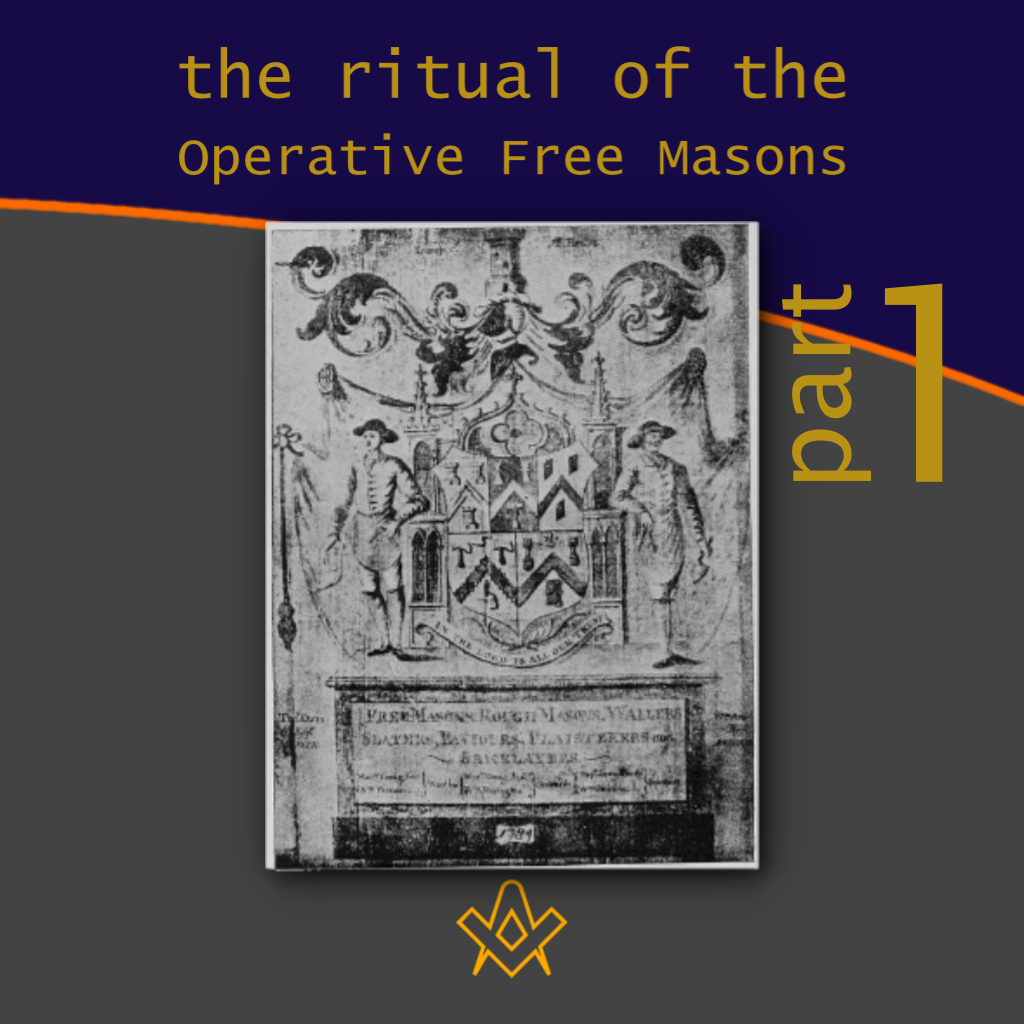The original paper was written, first, to prove that Speculative Free Masonry was derived from Operative Free Masonry; second, to give some account of the Operative Free Masons, of their Ritual, and of their customs.
By Thomas Carr, M.D., P. M. Honorary Member of the Guild of Operative Free Masons
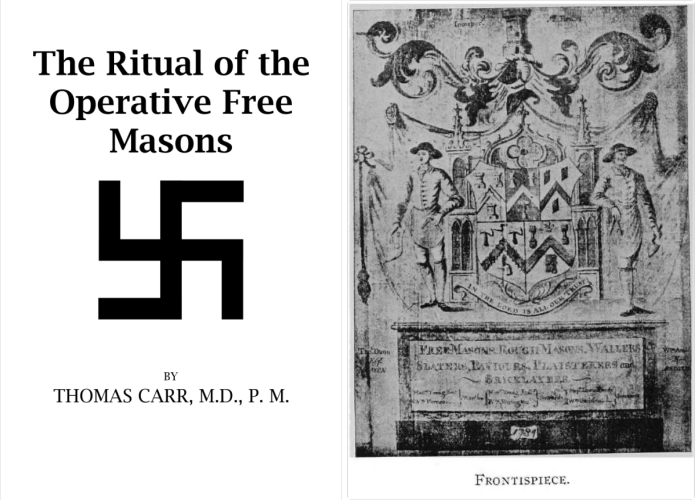
Chapter 1. Introduction.
Chapter 2. The Derivation of Speculative from Operative Free Masonry.
Chapter 3. Existing Operative Free Masons.
Chapter 4. The Apprentice. First Degree.
Chapter 5. The Fellow of the Craft. Second Degree.
Chapter 6. The Super Fellows. Third and Fourth Degrees.
Chapter 7. The Overseers. Fifth and Sixth Degrees.
Chapter 8. The Three Masters. Seventh Degree.
Chapter 9. Annual Ceremonies. The Sanhedrim.
Chapter 10. Conclusion.
The Worshipful Society of Free Masons,
Rough Masons, Wallers, Slaters, Paviors, Plaisterers,
and Bricklayers.
Lodge “Mount Bardon,” No. 110
Established 1831.
Bardon Hill, Leicestershire.
The above Lodge, No. no, of the York Division, passed the following resolution at a meeting held on the sixth day of May, 1911:
“That the paper written by Thomas Carr of 9 Carlton Terrace, Blackpool, M. D., on ‘The Ritual of the “Operative Free Masons’ is a true and accurate account “of the ceremonies practiced by this Lodge, and that the “tradition which has been handed down to us is that “these ceremonies have been so practised from time im- “memorial.
“That the said paper is based upon information furnished by us or by our accredited members and that the “said Thomas Carr has received our permission to publish the said paper.
“That there is much more of our ritual and ceremonies than is described in the said paper, but the ac- “count in the said paper is strictly accurate as far as it goes.
“That Thomas Carr is a corresponding member of “this Lodge in full standing and of good repute.”
Signed, John A. Grant, 1st Master.
Signed, Robert Walter Grant, 2nd Master.
Signed, William George Major Bailey, 3rd Master.
Signed, Robert B. Grant,
Secretary, I. P. M., VII
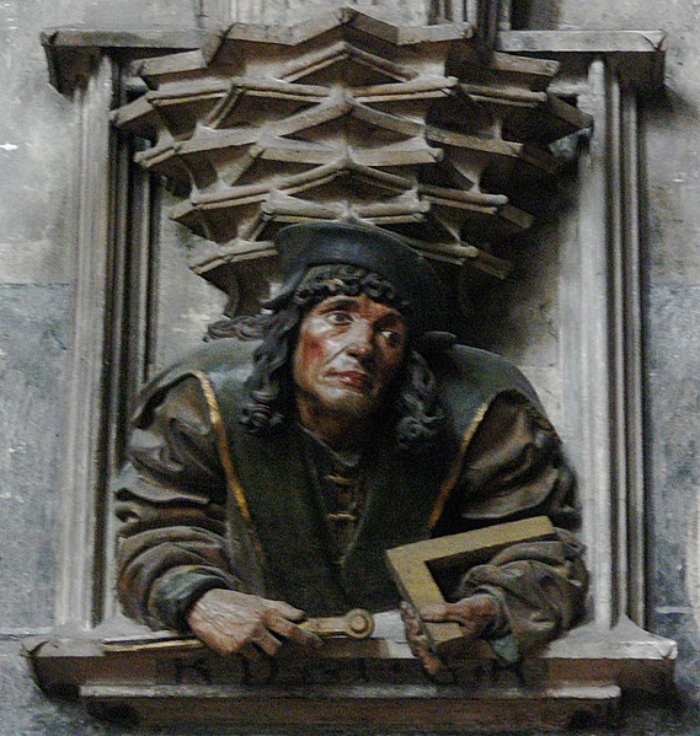
Relief of craftsman Anton Pilgram, St. Stephen’s Cathedral, Vienna. – Photo: Andreas Praefcke
IMAGE LINKED: wikimedia Attribution 4.0 International (CC BY 4.0)
Chapter 1. Introduction
Most Speculative Free Masons are aware of the fact that a Guild of Operative Free Masons still exists, and that the Masons’ Company of London is also still extant.
It is well established that Societies of Operative Masons existed in England, France, and Italy during the Middle Ages and built the Churches, Bridges, and Cathedrals which still adorn those countries.
Also, that in Germany there flourished a well-organized today of Masons, known as Steinmetzen.
The name Free Mason first occurs in Statute 25, Edward 3, (1352). Elsewhere I have shown how Masons had to travel about to their work and how English Masons worked in France, and French Masons in England.
In days when writing was confined to the clerics and diplomas were unknown, it was the readiest solution of the difficulty of an unknown man testifying he was, a skilled and accredited craftsman, to have a system of pass words and signs which enabled him to prove he had been regularly taught his trade and was no cowan or pretender.
These ancient Operative Masons of the Middle Ages, both in England and on the Continent, had their regular procedure by which a lad was admitted as an apprentice, taught his work, and subsequently became entitled to practise his trade.
A good many of the old Regulations and Charges of these early days have come down to us. Some 80 examples are known and recognized.
The following is a list of some of the more important of these “Ancient Charges” as they are generally called:
List of Some Ancient Charges.
Regius (Halliwell), c. 1390, British Museum, Royal Library 17 A 1.
Cooke, Early 15th Century, British Museum, Add. M.S. 23, 198.
Lansdowne, Before 1598, British Museum, No. 98, art 48, f 276 B.
Sloane No. 1, 1646, British Museum, No. 3848.
Sloane No. 2, 1649, British Museum, No. 3323.
Harleian 1942, 17th Century, British Museum, Harleian No. 1942.
Harleian 2054, 17th Century, British Museum, Harleian No. 2054.
Harris No. 2, 1781, British Museum, Ephemerides, pp. 2493 g a a.
Grand Lodge No. 1, 1583, Grand Lodge Library.
Grand Lodge No. 2, 17th Century, Grand Lodge Library.
Buchanan, 1670, Grand Lodge Library, (Copy in Gould’s Book).
Colonel Clerke, 1686, Grand Lodge Library.
Thomas Foxcroft, 1699, Grand Lodge Library.
Stanley, 1677, W. Yorks, Masonic Library.
William Watson, 1687, W. Yorks, Masonic Library.
Taylor, Late 17th Century, W. Yorks, Masonic Library.
Plot, 1686, Published in Natural History of Staffordshire. Dr. Plot.
Bain, Bro. C. A. Wilson, Armley, Leeds.
Scarborough, Before 1705, Grand Lodge of Canada.
Hidalgo Jones, 1607, Prov. Grand Lodge, Worcestershire.
Wood, 1610, Prov. Grand Lodge, Worcestershire.
Lechmere, 17th Century, Prov. Grand Lodge, Worcestershire.
Phillips No. I, 17th Century, Rev. J. E. A. Fenwick, Cheltenham.
Phillips No. 2, 17th Century, Rev. J. E. A. Fenwick, Cheltenham.
Phillips No. 3, Early i8th Cent., Rev. J. E. A. Fenwick, Cheltenham.
Strasburg, 1459, M.S. at Strasburg (Findel).
Torgau, 1462, –? – (Findel).
Kilwinning No. 1, Late 17th Century, S. Michaels, Kilwinning,
Dumfries. Kilwinning No. 2, 17th Century, S. Michaels, Kilwinning, Dumfries. Kilwinning No. 3, Late 17th Century, S. Michaels, Kilwinning,
Dumfries. Kilwinning No. 4, 1730-40, S. Michaels, Kilwinning, Dumfries,
(A. Q. C. 6). Kilwinning No. 5, 1730-40, S. Michaels, Kilwinning, Dumfries. Antiquity, 1686, Lodge of Antiquity.
In these Ancient Charges we get evidences of the commencement of Moral teaching and of Secret Signs.
It is at once obvious that from very early times a high moral standard was inculcated by these Ancient Charges.
In the oldest Charge of all, “The Regius,” dating about 1390, implicit truth is recommended.
The Harleian No. 2054, dating from the 17th Century, was originally the property of the Chester Guild and among other things says there are “several words and signs of a Free Mason to be reveiled” which may be communicated to no one “except to the Master and Fellows of the said Society of Freemasons. So help me God.” Here followeth the worthy and godly oath of Masons.
There is said to have been a M.S. by King Henry VI (1422-1461) in the Bodleian Library, in which that King says “some Maconnes are not so virtuous as some other menne, but for the most parte they be more gude than they would be if they were not Maconnes.”
In the 17th Century and probably earlier private gentle- men and Army Officers began to be admitted as Members of this Society of Free Masons in England and Scotland.
John Boswell, Esq., a landed proprietor, was a member of St. Mary’s Chapel Lodge, Edinburgh, in 1600.
Robert Moray, Quarter Master General of the Scottish Army was made a Mason at Newcastle in 1641.
Elias Ashmole, the celebrated antiquarian, and Colonel Henry Manwaring were made Masons at Warrington in 1646.
It is interesting to note the fact that of these three men, who were among the earliest Honorary, or non-operative, or in more modern terms Speculative, Masons made in England, Moray was a Scotch Covenanter, Ashmole was a Royalist and Manwaring was a Parliamentarian.
So that even in those days Masonry was a bond of union between men of differing religious and political opinions, and that even in the time of the great Civil War.
In 1647 Dr. William Maxwell joined the Lodge at Edinburgh. As far as is known he was the first medical man to become a Mason.
It is also noteworthy that in the minutes of St. Mary’s Chapel Lodge, Edinburgh, it is recorded that Boswell attested his mark at the meeting of the Lodge held on June 8th, 1600.
The Earls of Cassilis and Eglinton were initiated in the Lodge of Kilwinning in or about 1670. Private gentlemen such as these I have instanced began about this time to be known as Accepted Masons, and gradually increased in number.
In 1717 under the influence of Dr. Anderson and his friends some Operative Freemasons with some of these non-operative.
Accepted or Speculative Freemasons, belonging to four Lodges in London, met and formed the first Grand Lodge; a combination in which Speculative Masonry instead of Operative Masonry was the primary consideration.
Architecture and Operative tools became symbolical, but the Ritual was based on the Ritual of the old Operative Society, of which indeed it was largely a reproduction.
The Apprentice Degree and the Fellow Craft Degree were founded on the corresponding degrees of the Operative system.
Later on, when a Master’s Degree — not a Master of a Lodge but a Master Mason — was added, Anderson and his friends invented a ceremony based in the Operatives’ Annual Festival of October 2nd commemorating the slaying of Hiram Abiff at the Building of King Solomon’s Temple.
The real Secrets and the real Ritual of the Operative Masters’ Degree could not be given as but few knew them, namely only those who had actually been one of the three Masters, 7th Degree, by whom the Operatives were ruled, and Anderson had certainly not been one of these; his function having been that of Chaplain, although it is quite possible he had been admitted an Accepted member of the Craft some years previously in Scotland.

The Ritual of the Operative Free Masons
By: Thomas Carr, M.D.
This work has been selected by scholars as being culturally important, and is part of the knowledge base of civilization as we know it. This work was reproduced from the original artifact, and remains as true to the original work as possible. Therefore, you will see the original copyright references, library stamps (as most of these works have been housed in our most important libraries around the world), and other notations in the work.
This work is in the public domain in the United States of America, and possibly other nations. Within the United States, you may freely copy and distribute this work, as no entity (individual or corporate) has a copyright on the body of the work.
As a reproduction of a historical artifact, this work may contain missing or blurred pages, poor pictures, errant marks, etc. Scholars believe, and we concur, that this work is important enough to be preserved, reproduced, and made generally available to the public. We appreciate your support of the preservation process, and thank you for being an important part of keeping this knowledge alive and relevant.
Recent Articles: masonic history
 Protestantism and Masonic Influence in Brazil Discover the untold story of how Freemasons helped Southern Americans immigrate to Brazil post-Civil War, fostering economic and educational growth in Santa Bárbara d’Oeste and Americana. Learn about their pivotal role in establishing Protestant churches and ensuring the secularity of the Brazilian State amidst a Catholic-dominated society. |
 Explore the proper use of the sacred word in Brazilian Freemasonry through an analysis of Masonic literature and Bible translations. Uncover the errors in pronunciation and the need for corrections to maintain liturgical coherence in rituals. Discover insights on Masonry, rituals, and the Hebrew word Boaz. |
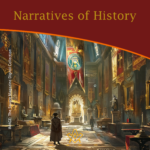 Narratives of History |
 A Very Royal Sesquicentenary |
 Unveiling the Enigma: Discover the Royal Society's Legacy and its Impact on Science. Delve into the fascinating history of the Royal Society, the prestigious UK academy shaping scientific progress since 1660. Explore its pivotal role in advancing knowledge, fostering collaboration, and unlocking the secrets of the universe. Prepare to be amazed! |
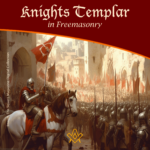 Knights Templar in Freemasonry Uncover the Mysteries of the Knights Templar in Freemasonry! Delve into the intriguing world where chivalry and symbolism intertwine. Discover the captivating rituals and ancient secrets behind the Knights Templar Masonic Orders. Explore the historical connection and delve into the enigmatic narratives that continue to fascinate enthusiasts today. Unveil the hidden truths now! |
 The Royal Arch stands as the rainbow of promise in the Ritual; it stands as the promise of the resurrection; of that which was lost and that it shall be recovered. The question arises as to whether the Master's Word was originally communicated in the Third Degree? On this point there is some diversity of opinion. Originally published in 1915, this insight into the Fourth Degree – the Holy Royal Arch – is as relevant today as it was over 100 years ago. |
 Unveiling the Mysteries of Druidism: Discover the Intriguing Connection with Freemasonry. Explore the ancient spiritual practice of Druidism and its fascinating ties to the enigmatic world of Freemasonry. Delve into the shared symbolism and rituals that have captivated minds for centuries. Unlock the secrets of these intertwined traditions today! |
 Uncover the legacy of freestone masons and their pivotal role in crafting medieval cathedrals. Discover the artistry behind their techniques, the hierarchy within their craft, and the enduring impact of their intricate carvings. A deep dive into the world of these master craftsmen awaits you! |
 Unearth the intriguing journey from Vincha Culture to Freemasonry. Discover how ancient building methods intertwine with modern Masonic philosophies. This exploration will shed light on the fascinating link between the Serbian term "shestarenye" and the symbolic significance of the compass in Freemasonry. |
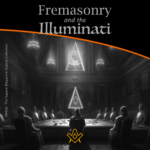 Freemasonry and the Illuminati Unravel the enigmatic world of Freemasonry and the Illuminati in our latest exposé. Dive into centuries-old mysteries, debunk conspiracy theories, and discover the truth behind these elusive societies. Are they puppet masters or mere myths? Join us as we dissect history and fact from fiction. |
 The Île des Templiers, or “Island of the Templars” lies within a leafy park in Paris. The execution site of Jacques du Molay, the last Grand Master of the Knights’ Templar bears a plaque with the epitaph ‘A cet endroit / Jacques de Molay / Dernier grand maître / de l'ordre du temple / a été brûlé le 18 Mars 1314’ (‘In this location / Jacques de Molay / Last grand master / of the order of the temple / was burned on 18 March 1314’) |
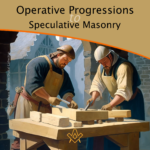 Operative Progressions to Speculative Masonry Both Operative and Speculative Masonry are an important part of the modern fraternity of Freemasonry, which combines elements of both traditions. Today, Freemasonry is a fraternity that is open to men of good character, who are interested in personal development and in making a positive contribution to their communities. |
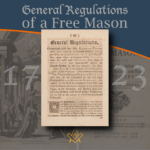 General Regulations of a Free Mason, 1723 General Regulations of a Free Mason as contained in Anderson's Constitutions of the Freemasons, published 1723. the Regulations are of great historical interest. Compiled by George Payne, the second Grand Master of the Premier Grand Lodge of England, they were printed in 1722/3, thus published just over five years after the formation of the Grand Lodge 1717. |
 The Genesis of the 1723 Book of Constitutions 2023, marks the three hundredth anniversary of the publication of the first printed Book of Constitutions of the Grand Lodge formally established in London two years previously. This is an anniversary whose significance extends beyond freemasonry. A paper by Andrew Prescott |
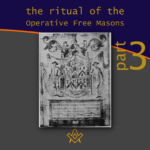 The Ritual of the Operative Free Masons - P3 Existing Operative Free Masons. The ritual I am about to refer, is that of "The Worshipful Society of Free Masons, Rough Masons, Wallers, Slaters, Paviors, Plaisterers, and Bricklayers." By Thomas Carr, M.D., P. M. Honorary Member of the Guild of Operative Free Masons |
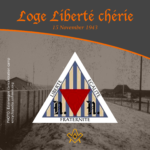 Liberté chérie was a Masonic Lodge founded in 1943 by Belgian Resistance fighters and other political prisoners at Esterwegen concentration camp. It was one of the few lodges of Freemasons founded within a Nazi concentration camp during the Second World War. |
 The Ritual of the Operative Free Masons - P2 If anyone doubts the fact that the formation of Speculative Free Masonry was due to and based upon Operative Free Masonry, it is quite easy to convince him of his error if he will only study the first Book of Constitutions. By Thomas Carr, M.D., P. M. Honorary Member of the Guild of Operative Free Masons |
 In 1881, Freemasonry rose from the ashes of a fire in the mining town of Kokomo, Summit County, Colorado. Corinthian Lodge No. 42, along with Kokomo, no longer exists but it holds the record of having been – at an elevation of 10,618 feet – the highest Masonic Lodge in the USA. |
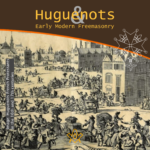 The Huguenots and Early Modern Freemasonry The Huguenots influence in the development of early modern Freemasonry at the time of the formation of the Grand Lodge in London around 1717 / 1723. |
 November is a month of reflection – perhaps due to the fact that we are getting close to the years' end – but also because Remembrance / Armistice Day (11 November) is a significant date in most countries' diaries. |
 Speculative Freemasonry, as practise by Grand Lodge of England, was officially born just over three hundred years ago, is today an international organisation, counting over six million members. It has been subjected to persecution, suppression, and abolition throughout its history. In its infancy, only a couple of decades after its official birth, it had already become a target. |
 The Ritual of the Operative Free Masons - P1 The original paper was written, first, to prove that Speculative Free Masonry was derived from Operative Free Masonry; second, to give some account of the Operative Free Masons, of their Ritual, and of their customs. By Thomas Carr, M.D., P. M. Honorary Member of the Guild of Operative Free Masons |
 American Fraternalism in the 19th and Early 20th Centuries The late 19th and early 20th centuries in the United States has been called the "Golden Age of Fraternalism." How did this come about and why was the idea of joining a fraternal organization so popular? We will explore this question and examine the regalia used by many fraternal organizations in this period. |
 Societas Draconistarum, meaning "Society of the Dragonists"– was a chivalric Order for selected nobility, founded in 1408 by Sigismund von Luxembourg, who through marriage became the King of Hungary (1387–1437) and later Holy Roman Emperor. The Order was fashioned after the military orders of the Crusades, requiring its initiates to defend the cross and fight the enemies of Christianity, in particular the Ottoman Empire. |
 The Perjured Free Mason Detected Was Samuel Prichard a perjured individual, or simply a misguided Freemason? Prichard's book "Free Masonry Dissected" published in 1730, is now used by many Masonic historians as a source of reference with regards to the introduction of the third degree into the Craft. But at the time it was published in 1730, it was not so well received by members of the Grand Lodge of England. |
 17th century and the Holy Royal Arch This article focuses on a period of transition between a point in time when we can safely and historically identify the first formation of what could be called as the ‘Royal Arch’ and the historical events that have preceded it. |
 Most Freemasons have heard the terms 'Operative' and 'Speculative' Masons, and this article helps to understand the difference: |
 Roberts' Constitutions of Freemasonry 1722 Published a year before Anderson's Constitutions, The Old Constitutions Belonging to the Ancient and Honourable SOCIETY OF Free and Accepted MASONS. Originally printed in London England; Sold by J. Roberts, in Warwick-Lane, MDCCXXII.(1722) |
 From 'Songs of religion and life', 1876 by John Stuart Blackie (1809-1895) |
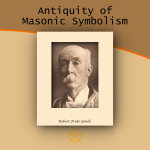 On the Antiquity of Masonic Symbolism Is the Symbolism of Masonry an inheritance derived from the old Masons who flourished before the era of the Grand Lodges (1717); or has it been borrowed from the Rosicrucians or others, after 1717? |
 Mason's Marks – from Egypt to Europe? Mason's marks have been a source of intrigue, not only to Freemasons but to historians and archaeologists. The use of simple pictograms have been employed for millennia by artisans to identify their work. But where did they originate and why? |
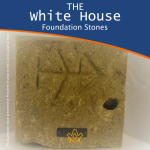 The White House Foundation Stones Further to the articles in our series on the history of the stone masons, we have a rather intriguing addition. During the 1950's renovation of the White House, President Truman retrieved more than 100 stone blocks with stonemasons marks. |
 What the Goose and Gridiron Tavern is in the ancient annals of London Freemasonry, The Green Dragon Tavern is to the memories of the Free-mason, of Boston and New England. |
 Auschwitz concentration camp: video photo article taken in 2013 |
 There are two things of importance happening this day - 27 January |
 Two approaches regarding the understanding of Freemasonry |
 Masonic Research in England c1930 An article which appeared in an American Masonic magazine, c1930 and which was reproduced in England, provoking a little controversy. |
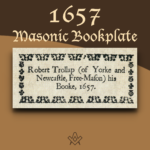 Masonic bookplates the ‘Brethren’s spiritual coats of arms and marks’ |
 The Unlawful Societies Act of 1799 Rebellious Freemasons and the 21st century |
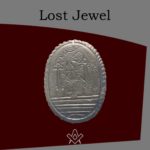 In 1912, Sarah Dowd of Dromore, Ireland, found a Masonic jewel dated 1517 - a date two hundred years before the establishment of Grand Lodge... |
 Freemasonry and Fascist Regime Interesting speech by the famous historian Prof. Aldo A. Mola, who links the fascist regime with the Masonic Associations. |
 Was famous Russian poet Alexander Pushkin a Freemason? And if so, was he a member of the lodge ‘for which all the lodges in Russia were destroyed’? |
 The Importance of Masonic Research Why is accurate - or authentic - Masonic research so important? The importance of making a daily advancement in Masonic knowledge is something that The Square is passionate about promoting. |
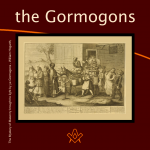 The Antient Noble Order of the Gormogons had a brief existence in the eighteenth century; they left few records or accomplishments, |
masonic knowledge
to be a better citizen of the world
share the square with two brothers

click image to open email app on mobile device


